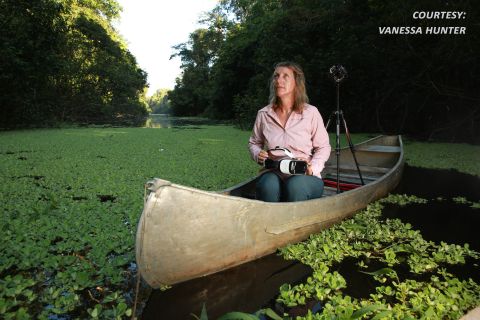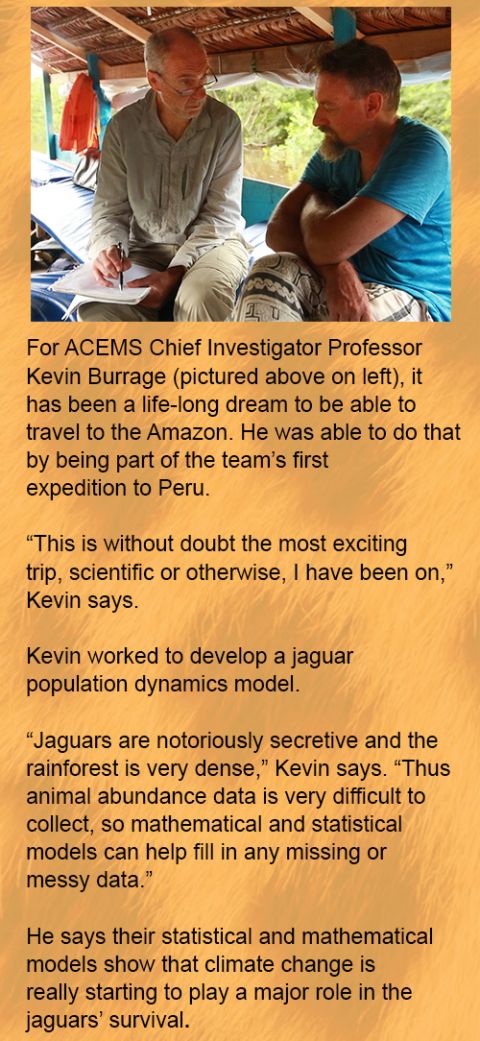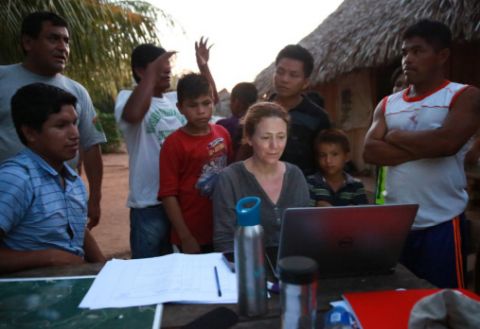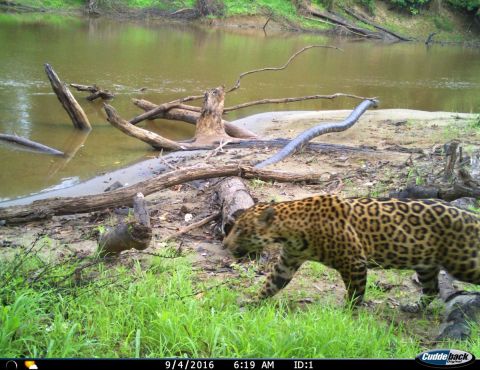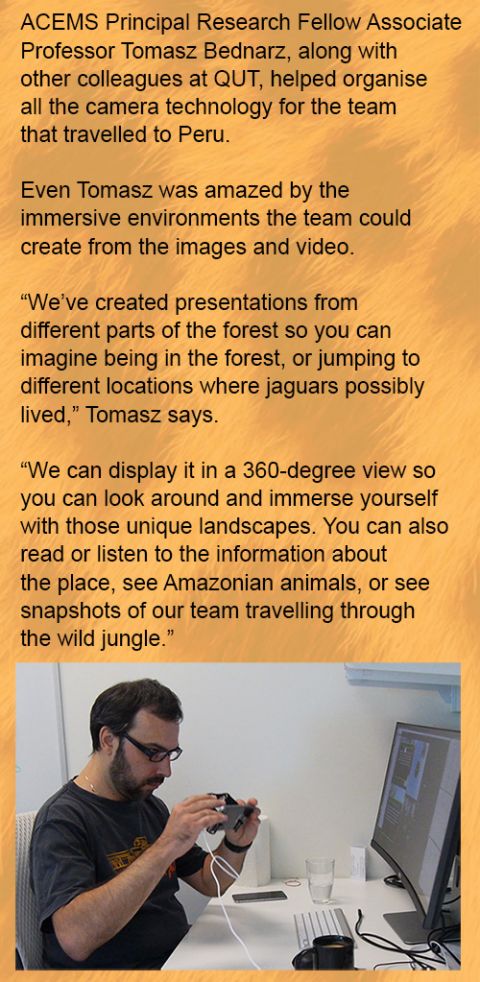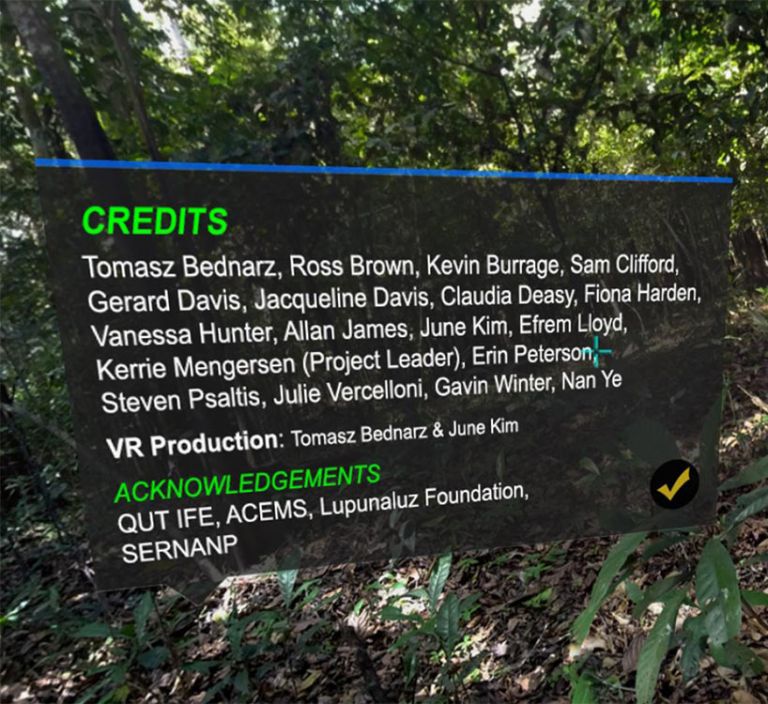This was the problem facing Distinguished Professor Kerrie Mengersen, Deputy Director and Chief Investigator at the ARC Centre of Excellence for Mathematical and Statistical Frontiers (ACEMS). Her job as a statistician is all about data, giving meaning to it, and then making sure it’s being used to make better and smarter decisions about real-world problems.
However, when it comes to the jaguar population in South America, there is very little data, other than the fact the numbers are going down. In fact, it’s believed the population has been cut in half over the last century, thanks to factors such as the loss of habitat, interactions with humans, declines in the number of prey, and even extreme weather events like flooding and drought.
“If we look across maths, stats and machine learning, this project has all those things,” Kerrie says. “So we need mathematical models, we need statistical models and we need the machine learning to be able to integrate the information and create the computational tools to do that modelling.”
Less than two years into the project, the first and main goal—to establish a jaguar corridor in Peru—seems very much achievable. That’s nothing short of amazing, when you consider how this project started.
“We started with just a little spark, a vision, two women in a boat sort of thing,” Kerrie says.
The other ‘woman in the boat,’ was the Lupunaluz Foundation, a conservation group that was already working on efforts to protect the jaguar population in Peru. The foundation knew about previous conservation efforts Kerrie had taken part in, most notably working to protect critically endangered cheetahs in Southern Africa and orangutans in Indonesia. With those projects, she tapped into local knowledge to build statistical models to guide the conservation efforts.
This project, though, would really build upon those citizen science efforts by adding some new and very cool technology—such as 360-degree cameras and 3D immersive environments.
Team's paper: "Modelling Imperfect Presence Data Obtained by Citizen Science"
“This was a first in using virtual reality for a really serious purpose, and not just for the ‘ooh-ah’ of the virtual environments,” Kerrie says. “We’re using it for scientific purposes to extract information about how to help with decision-making in conservation.”
However, to take that cool technology and make it work in the harsh elements of the Amazon jungle would require a real team effort involving researchers from across multiple disciplines. Kerrie put together such a team from ACEMS and the Queensland University of Technology (QUT), where Kerrie is based, and led a four-week expedition deep into the Amazon jungle in Peru.
The team took countless photos and videos using 360-degree and 3D cameras, which gave them plenty of material to create the virtual environments.
“We can’t wait to make decisions about the jaguar’s conservation because their habitat is being destroyed as we speak,” Erin says. “We can use these sexy new technologies to get information to biologists who aren’t in Peru. We can essentially take the forest to the biologist and get their expert opinion and put that into our models.”
The team also worked to establish ties with the local indigenous communities, so they could tap into the knowledge of jaguars and the jungle. After the first trip, the team developed several main models, including a spatial model for jaguar presence. Another was a population dynamics model, which showed just how sensitive jaguar numbers were to impacts such as deforestation, hunting and climate change.
“A major part of the trip was to ‘skill up’ the local indigenous people to start monitoring their own environment, including the jungle and animals that live in it,” Kerrie says. “This is essential if we are to have any hope of conserving jaguars.”
The trip also helped her continue to get the international support she needed to keep things moving forward. Kerrie says local and regional governments are now supporting the project, and it has even caught the eye of the United Nations.
All this support will be needed to not only establish a jaguar corridor, but to monitor and maintain it as well, which means Kerrie is continuing her work on the project in 2017.
“This has been hugely challenging as a stats project, both in core stuff that I do and in the broader statistical methods,” Kerrie says. “We’re opening the way to using all these different types of data sources. These are things that we talk about, but when you’re faced with actually doing it, you have to work out the methods. There is no other way.”
“The stats and new technology, the things ACEMS is into, have really got a profile in this and could be the thing that drives us to succeed in this—to actually create a corridor for the protection of the jaguars and all of the jungle. That would be really cool."


